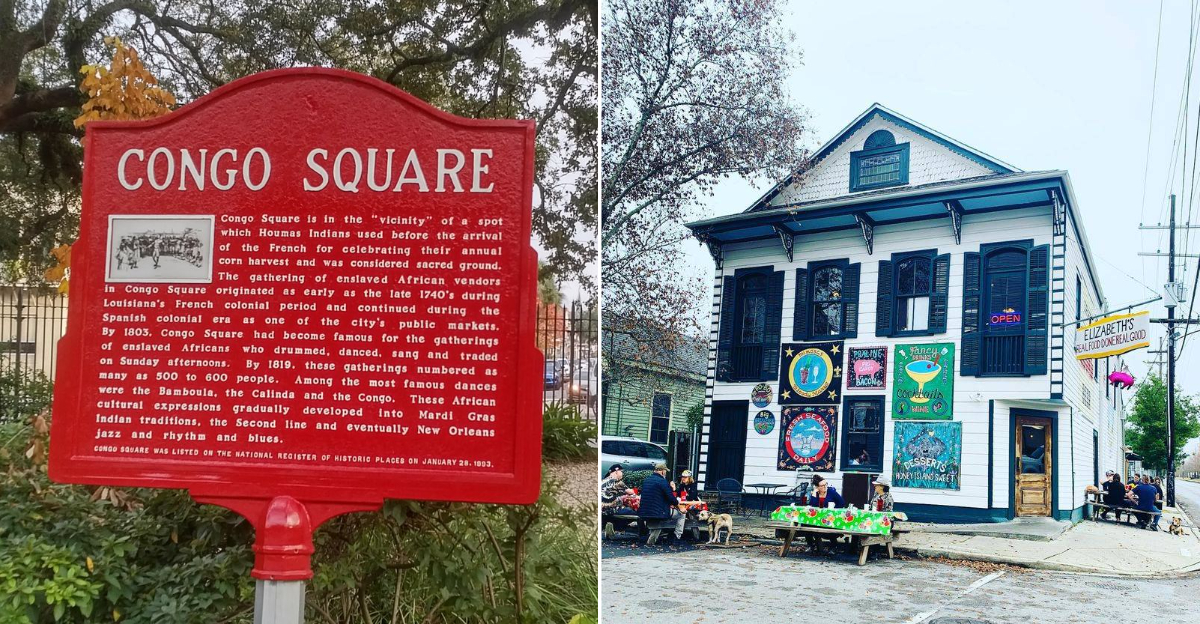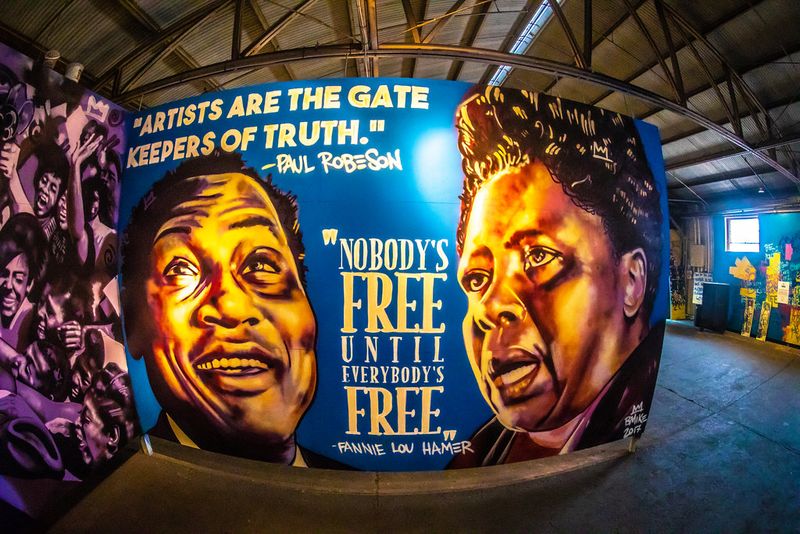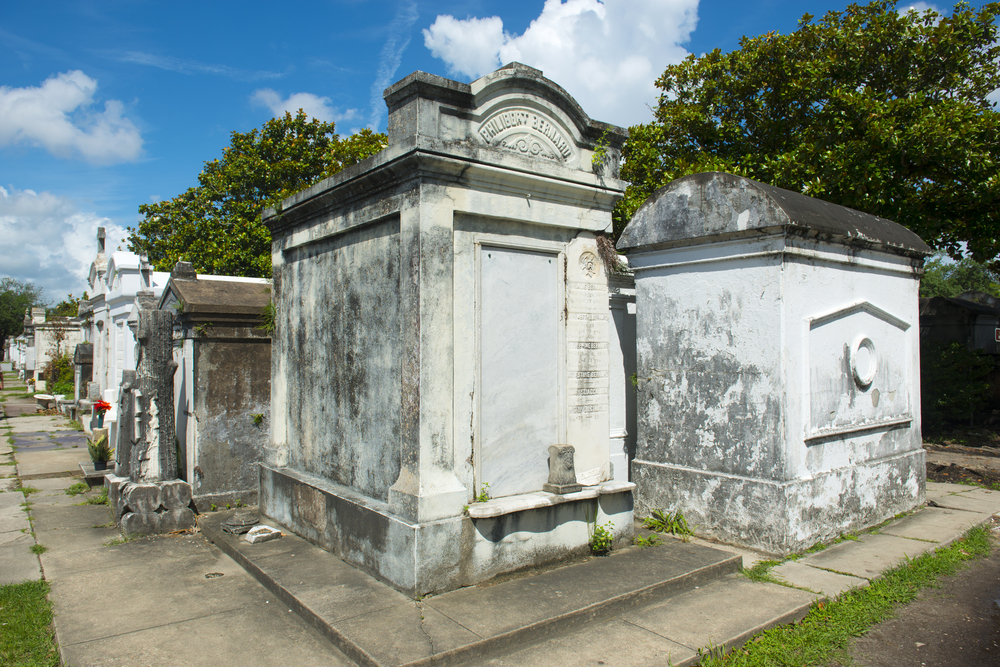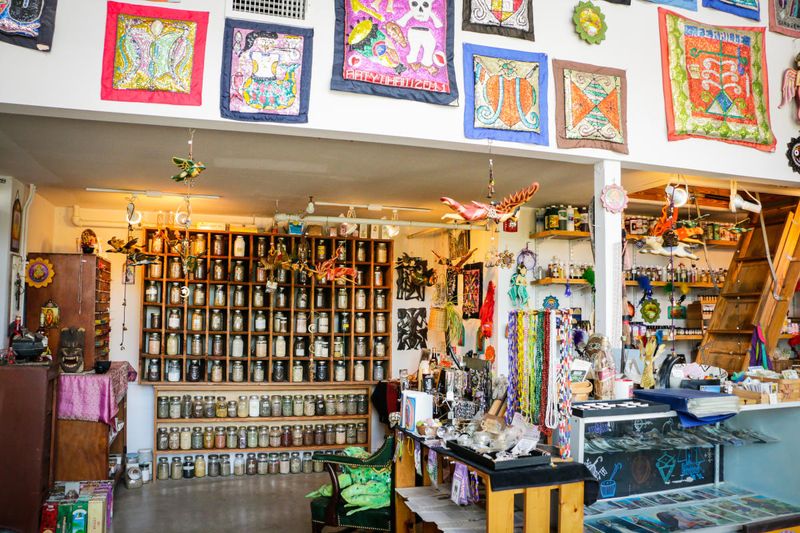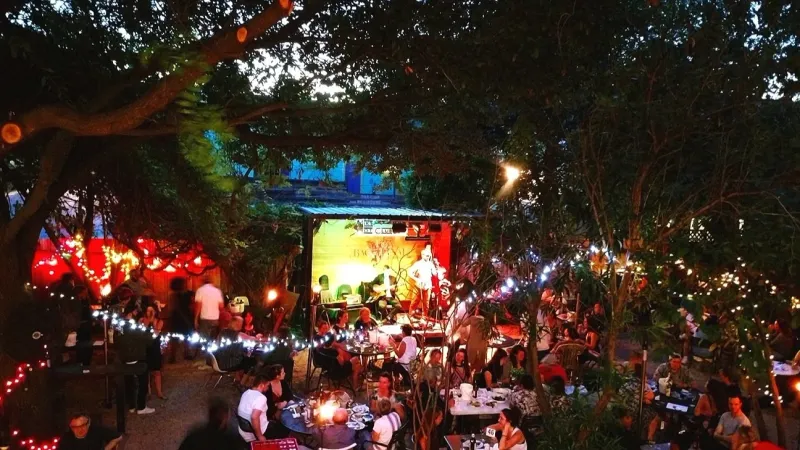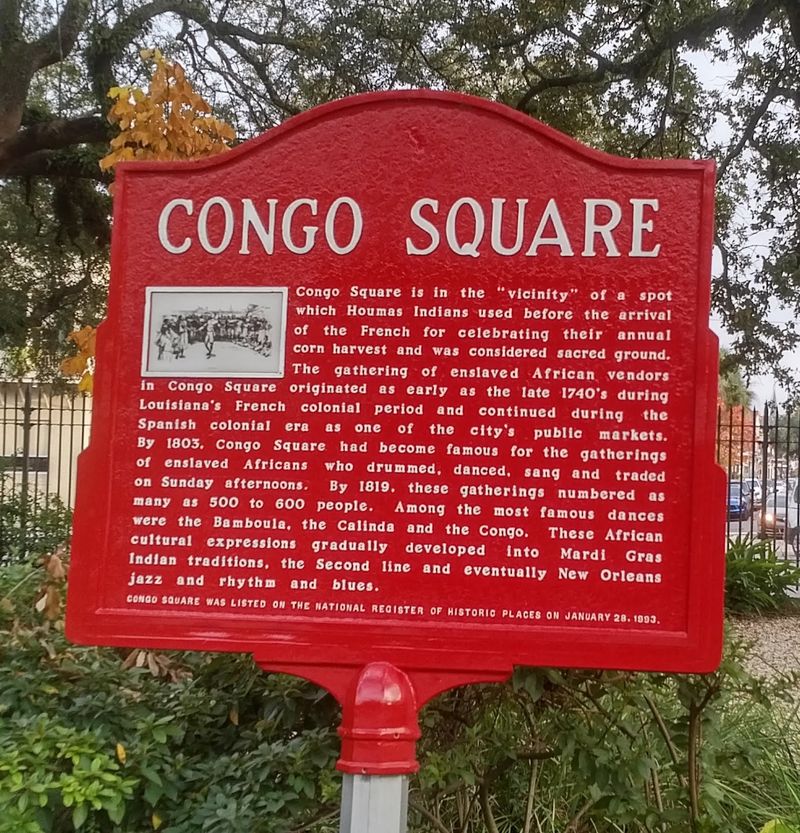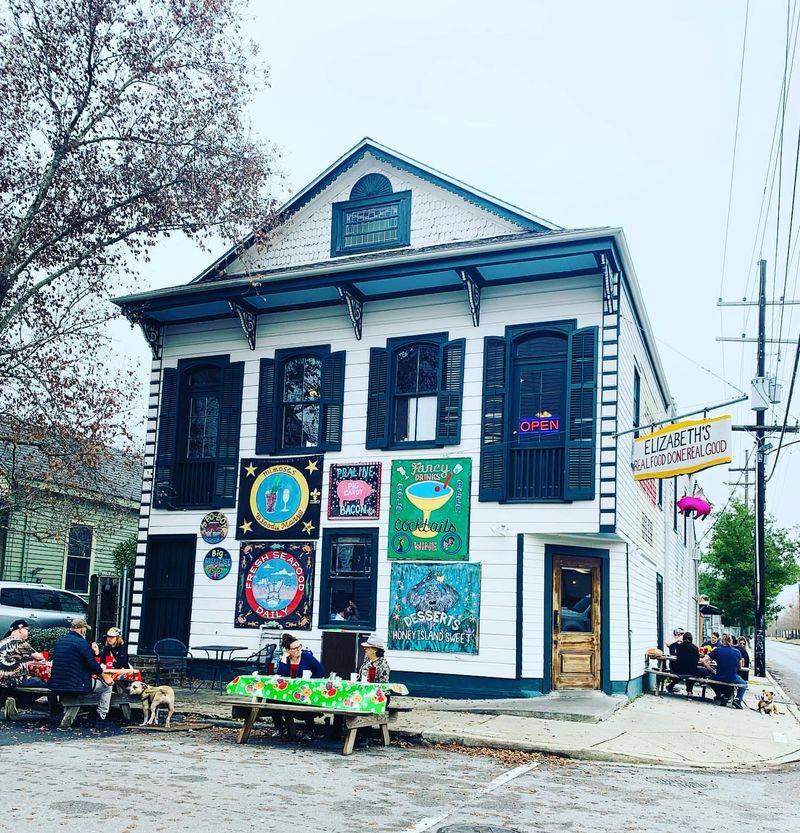New Orleans holds secrets beyond the famous French Quarter and bustling Bourbon Street. While tourists flock to well-known attractions, the city’s true magic lives in quiet corners where locals gather and authentic culture thrives. These hidden gems offer a deeper connection to the Crescent City’s soul, from peaceful gardens to vibrant community spaces that tell stories you won’t find in guidebooks.
1. Studio BE
Graffiti transforms into powerful art at this warehouse gallery in the Bywater neighborhood. Artist Brandan Odums created murals that celebrate African American culture and history on massive walls.
Walking through feels like entering a living museum where every spray-painted detail tells important stories. The artwork changes regularly, so each visit offers something new to discover.
Local students often visit for educational programs, making this space both inspiring and meaningful for the community.
2. Lafayette Cemetery No. 1 (Via Side Gate)
Most visitors enter through the main entrance, but the side gate reveals a quieter path through this historic cemetery. Marble tombs and weathered headstones create peaceful walkways away from tour groups.
Ancient oak trees provide shade while you read fascinating stories carved in stone. Many famous New Orleans families rest here, including early settlers and Civil War veterans.
Photography enthusiasts love the morning light filtering through moss-draped branches, creating magical shadows across the marble monuments.
3. Island of Salvation Botanica
Candles flicker and herbs fill the air at this authentic spiritual shop in the French Quarter. Owner Sallie Ann Glassman practices traditional Vodou and creates custom spiritual items for visitors seeking guidance.
Glass jars contain mysterious powders and roots while colorful altars honor different spirits. The atmosphere feels both mysterious and welcoming to curious travelers.
Many people come for palm readings or to learn about New Orleans’ spiritual traditions that blend African, Caribbean, and Catholic influences.
4. The Backstreet Cultural Museum
Second lines and jazz funerals come alive through exhibits that celebrate African American culture in New Orleans. Elaborate costumes from Mardi Gras Indian tribes fill display cases with stunning beadwork and feathers.
Interactive displays let you hear traditional music while learning about social aid and pleasure clubs. The museum preserves traditions that shaped the city’s unique character.
School groups and families discover how community celebrations became an important part of New Orleans identity through generations of creativity and resilience.
5. Bacchanal Wine
Wine bottles line shelves inside what looks like a regular house, but the real magic happens in the backyard garden. String lights twinkle overhead while live jazz musicians perform on a small stage.
Wooden tables scattered among plants create intimate dining spots where strangers become friends. The cheese plates pair perfectly with wine selections from around the world.
Locals consider this their neighborhood living room, especially during sunset when the garden glows with golden light and conversation flows freely.
6. Music Box Village
Sculptures made from recycled materials double as musical instruments in this outdoor performance space. Artists built towers, bridges, and structures that create unique sounds when played by musicians or visitors.
Monthly concerts feature experimental music that blends traditional New Orleans sounds with modern creativity. The venue encourages audience participation and exploration.
Children especially love climbing on the installations and discovering new sounds, while adults appreciate the innovative approach to community art and environmental sustainability.
7. Congo Square
Drums once echoed across this historic square where enslaved people gathered on Sundays to play music and dance. Today, the space honors that legacy with regular performances and cultural events.
Bronze plaques tell stories of how African rhythms mixed with other influences to create jazz music. The square sits within Louis Armstrong Park, surrounded by peaceful walkways.
Weekend festivals often feature local musicians carrying on traditions that began centuries ago, making this hallowed ground come alive with authentic New Orleans sounds.
8. Alchemy Botanical Garden at the Pharmacy Museum
Hidden behind America’s first licensed pharmacy lies a secret courtyard garden filled with medicinal plants. Herbs that early doctors used for treatments still grow in carefully tended beds.
Brick pathways wind between plants labeled with their historical uses, from headache remedies to digestive aids. The peaceful space offers escape from busy French Quarter streets.
Garden tours explain how traditional medicine evolved into modern pharmacy, while the plants themselves provide natural beauty and fascinating stories about healing through the centuries.
9. Elizabeth’s Restaurant
Praline bacon sizzles on the grill at this neighborhood breakfast spot where locals line up for creative comfort food. The small dining room buzzes with conversation as regulars catch up over coffee.
Menu items blend traditional Southern cooking with New Orleans flair, creating dishes you won’t find anywhere else. The portions are generous and the prices remain reasonable.
Weekend brunch brings families together while weekday mornings attract workers seeking hearty meals before long days, making this Bywater gem a true community gathering place.
10. Marigny Opera House
Intimate performances fill this restored historic building where opera singers once graced elaborate stages. Today, the venue hosts everything from experimental theater to acoustic concerts in a cozy setting.
Original architectural details create elegant atmosphere while modern sound equipment ensures perfect acoustics. The small size means every seat offers great views of performers.
Local artists showcase new works alongside touring acts, making each show feel special and personal. The venue supports emerging talent while preserving the building’s rich entertainment history.
